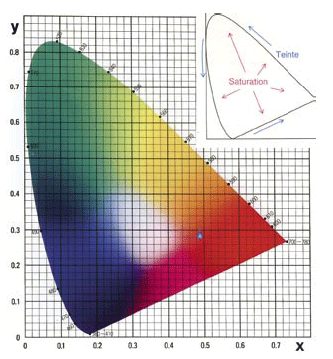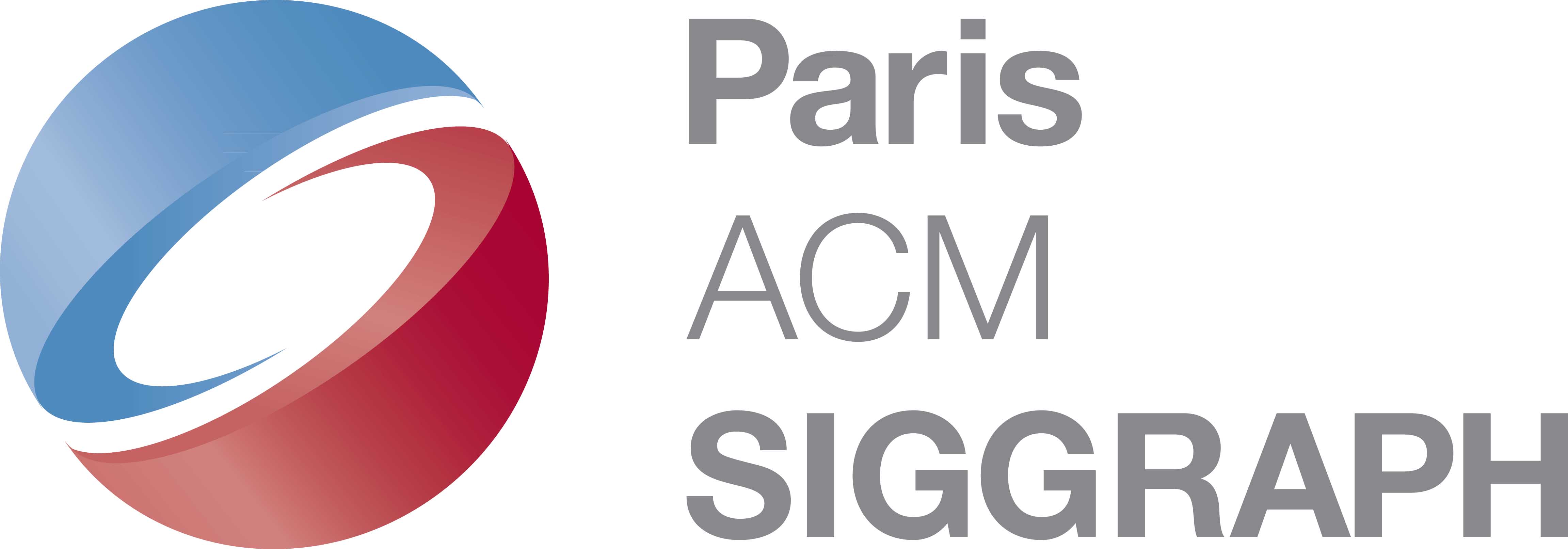Color

Color adds magic to circus. Here, the Cirque du Soleil.
Last revised 9/4/2014. Return to Major concepts.
Coding color in Roxame (with Processing code).
Color is the poor relation of digital art. We discovered that recently, with the publication of Réflexion sur la couleur, by Carlos Cruz-Diez. In fact, we know of only two artists talking about it, Anne-Sarah Le Meur and Howard Cohen, and with limited impact. :You may be surprised, since graphic tools and graphic programming seem to offer to the painter a sort of infinite liberty in the color space (be it RGB or Munsell, see below). The painter has no longer to bother himself with a limited set of pigments, each of them with its good and poor features.
But there are good reasons, when you think about it. The freedom into Munzell dimensions has finally to be materialized onto a screen or a print. In both cases, the artist has no means to control the final rendering, and still less its look and feel for spectators sitting at their desk, crouching in their sofa or reading their smartphone in public transport. Then they focus their attention on the still or moving play of shapes and patterns. Color comes as a complement, necessary for comfort and semantics, but not much more.
It may be different in feature films done for cinema halls. Here, the colorimetric chain can be calibrated down to the final projection. LED art could also bring interesting oportunities, at leas when the environment is well controlled. 3D print will also perhaps bring back well defined pigments into the toolbox. But that is presently Art Fiction, if we can say so.
Neurosciences and serious socio-psychological studies will also give us new affordances and/or new guidelines, not to say aesthetic principle.
Basic and more sophisticated models
Basically, the different colors cannot be correctly represented without a three-dimensions models (If you are not convinced, just try to sort a box of pastels in one or two dimensions). The most natural model is the Munsell space: hue, saturation and luminosity (or value).

>The RGB (red, green, blue) cube.
The basic model in digital graphics is a space of three values, red, green and blue (RGB). The three values are null for black, and equals to the maximum (0, or 255), for the white. This model is inspired by the human retina and hence by the material structure of screens and projectors. It is an additive model : red + green = yellow. The printing industry is mainly based on a four colors model : cyan, yellow, magenta, black (CYMB), correponding to successive layers of ink. But the artists have not to deal with this model. The necessary conversions are done automatically (under the control of a chromist) in the graphic chain. Anyway, high quality printing, be it industrial or studio made, uses more complex models with six or more inks.
Since the beginning of 21th century, powerful LEDs, cheap enough to be organized in arrays of several hundred points, offer new possisibilities, notably with a wider range of luminosity than traditional screens and projectors. That could take artists to code colors in absolut values of emission or in 10 bits codes instead of 8. See LED art.
To these "elementary" spaces, can be added global measurements on environment, used by aesthetical agents. Notably, at least for human seers: lighting conditions, color temperature, air humidity, atmosphere chemical composition, etc.

The HSV model (shortly, Munzell space);
- [Popper1 ] : - ... ce sont certains artistes de l'op art comme Albers et Vasarely qui ont mis le plus fort accent sur la couleur perçue, tandis que des artistes cinétiques comme Schöffer et Malina ont privilégié la couleur poïétique, celle de la création. Quant à la couleur théorisée, c'est de nouveau aux artiste de l'op-art que revient la palme et encore une fois à Albers et Vasarely, mais aussi à Herbin et à Lohse.
Specific colors.
< Le Noir, couleur dangereuse ou transgressive. Tome 1. Approche civilisationnelle. Tome 2. Approche communicationnelle.Eric Agbessi ed. . Editions Le Manuscrit, 2011. See notably the chapter " L'univers informatique en noir... et blanc" by Nicolas Oliveri and Sébastien Rouquette. But they deal mainly with color in machine carters, far from digital considerations.
- Blue. See Yves Klein.
- Indexed color: refers to a palette. See graphics.
- Standards : ICC (International color consortium)
- Interesting site Color
system.
- A nice review, dedicated to photographers, on the Photo Lovers website.
- Colorimetry. See a panorama of economical charts in Créanum April-May 2011.
References
The reader will find data on the web and in the references quoted below. A good start would be [Zelansky]
- Color models, color correction [Kemp]. Theoretical aspects
.
- A lot of data in [Brinkmann], [Foley],
[Gonzalez], [Processing], [Photoshop].
- Correction [Rivard] (works on Photoshop, for instance; non algorithmic).
- A for textures, long developments in [Ebert].
- Tools: [Java],[Roxame],[Photoshop].
- About artists like Albers and Vasarely and their color research, see [Popper].
< Réflexion sur la couleur, by Carlos Cruz-Diez. Ecole nationale supérieure des beaux arts, Paris 2013.
< Computational Color Imaging 4th International Workshop, CCIW 2013, Chiba, Japan, March 3-5, 2013. Proceedings Editors:
Shoji Tominaga, Raimondo Schettini, Alain Trémeau. Lecture Notes in Computer Science Volume 7786, Springer 2013.

Colorimetry. A domain much more complex that we could think. Here an image from a tutorial by Kleocolor.
< Traité des couleurs, by Johann Wolfgang Goethe. Original texts around 1790. French translation and collection, Paris, Triades 2011.
< Art et science de la couleur, by Georges Roque. Paris, Gallimard 2009.
< The color of time (God is a lobster and orhter forbidden bodies), by Johnh Golding (philosopher) 9 pages in [Adams, 2008 ]
<
Dictionnaire des termes de la couleur, by Robert Sève, Michel Indergand and Philippe Lanthony. Avallon. Editions Terra Rossa. 2007
< Yves Klein, l'aventure monochrome, by Denys Riout. Gallimard 2006.
< Color, by Paul Zelanski and Mary Pat Fisher. Pearson Education. 1st edtion 2006. French translation: Les théories de la couleur, Thalia 2006
< Guide complet et pratique
de la couleur, by J.P. Couwenbergh. OEM/Eyrolles 2003.
< La couleur pour les sites
web, by M. Holzchlag. Pyramyd 2002.
< Gestion de la couleur.
Calibration et profils ICC pour l'image numérique et la chaîne graphique. by G. Niemetzsky. Eyrolles 2002.
<
La couleur pour les sites
web, by M. Holzchlag. Pyramyd 2002.
<
Gestion de la couleur.
Calibration et profils ICC pour l'image numérique et la chaîne graphique. by G. Niemetzsky. Eyrolles 2002.
< Traité des couleurs. by Libero Zuppiroli and
Marie-Noëlle Bussac. Presses polytechniques et
universitaires romandes 2001 (neuro-psychological aspects).
-< Coloring without seeing: a problem in machine creativity. by Harold Cohen, 1999
< Computer Graphics, Principles and
practice. by James Foley. Addison Wesley,
2d edition, 1990 (practical).
<
Couleur-lumière,
couleur-matière, by Patrick Callet.
Diderot Arts et Sciences (1990 c. out of prin) (theoretical in depth work, mainly about materials)
< Interaction of color. by Joseph Albers. Yale University 1963.
- About color in cinema, see the book Cinéma total by Barjavel (1944, but available online ).
<
La couleur dans les activités humaines. by Mauride Deribéré. Dunod 1959. Though quite old, this book is still looked for in 2011. Déribéré has published a lot. Of scientific education, his works go beyond and have a prescriptive tone in all the common life applications. It is based on common experience more than on laboratory studies. On several points, it is now disputed (for instance, green walls in offices eventually resulted in depressive ambients, as far as I know). The book does no take art as a target, but many of its advices could be useful to digital creation, notably for immersive spaces.
<
Art de la couleur by Johannes Itten. Dessain et Tolra 2004 . Original 1921-1961.
DICCAN'S PARTNERS:

Paris ACM Siggraph, the French chapter of ACM Siggraph, worldwide non-profit organization of computer graphics.
